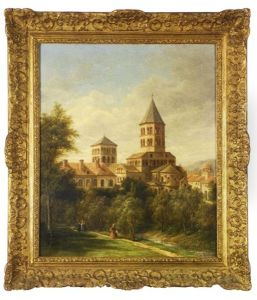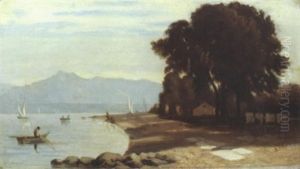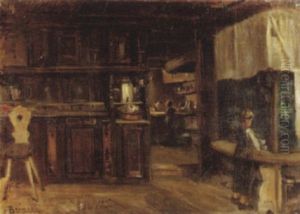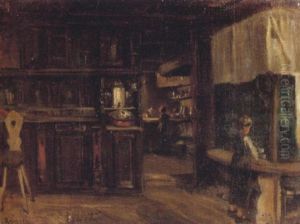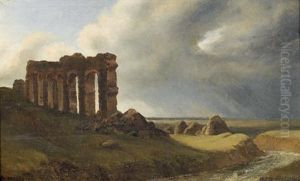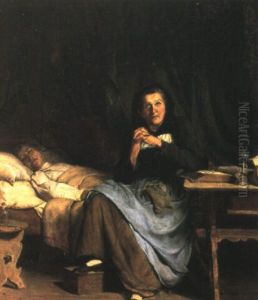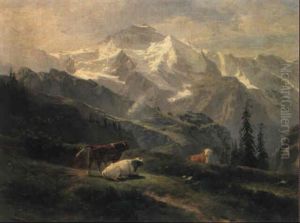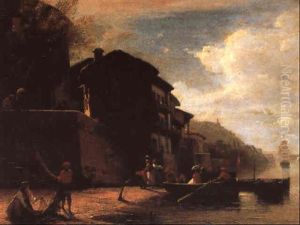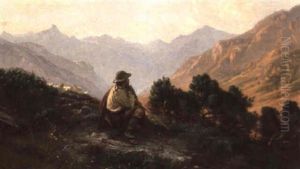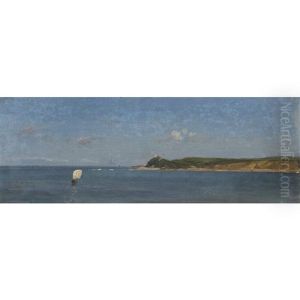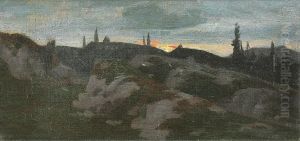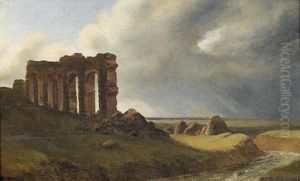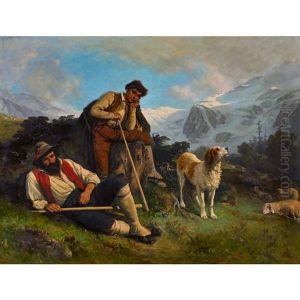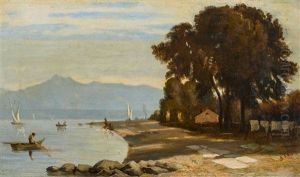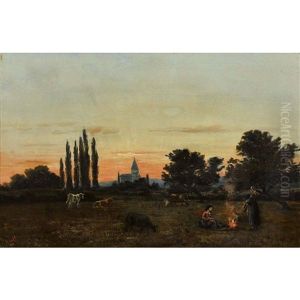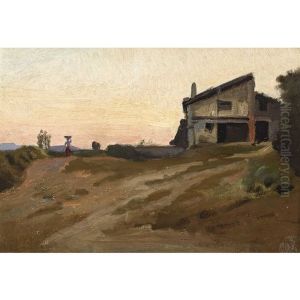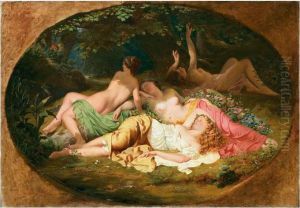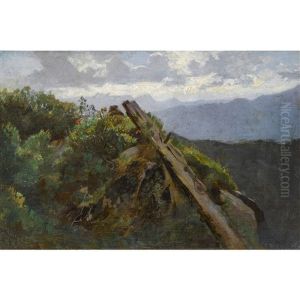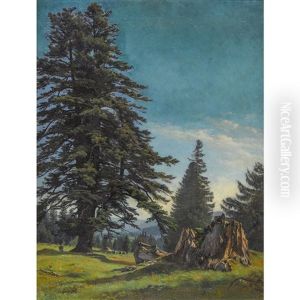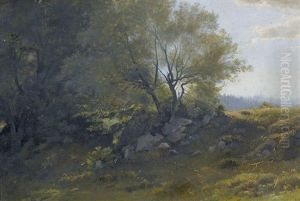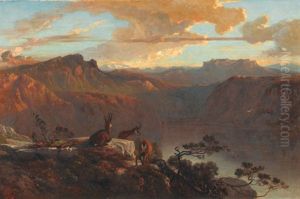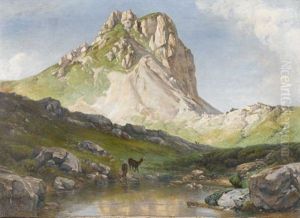Albert De Meuron Paintings
Albert De Meuron was a Swiss painter born on May 9, 1805, in Neuchâtel, Switzerland. Known for his landscapes and portraits, De Meuron was a significant figure in the Swiss art scene of the 19th century. His work is characterized by a detailed realism and a profound appreciation for the natural beauty of his homeland, as well as other regions of Europe he visited during his career.
De Meuron's early life was steeped in the cultural and artistic milieu of Neuchâtel, where he was exposed to the arts from a young age. He pursued formal art education in Switzerland and further honed his skills in Paris, a common practice among aspiring artists of his time seeking to immerse themselves in the vibrant European art scene. Paris, being the epicenter of artistic innovation during the 19th century, played a crucial role in shaping De Meuron's artistic vision and style.
Throughout his career, De Meuron traveled extensively across Europe, capturing the varied landscapes and cityscapes he encountered. His travels not only provided him with a rich tapestry of subjects but also exposed him to various artistic influences, which he skillfully integrated into his work. His paintings, often imbued with a sense of tranquility and a meticulous attention to light and shadow, reflect his deep connection with nature and his exceptional ability to capture its essence on canvas.
Despite his travels and exposure to different styles, De Meuron remained deeply rooted in the tradition of Swiss landscape painting, contributing significantly to its development during his lifetime. His works were widely exhibited and received acclaim in Switzerland and abroad, earning him a place among the prominent Swiss artists of the 19th century.
Albert De Meuron passed away on March 29, 1871, in Neuchâtel. His legacy lives on through his contributions to Swiss art, with his works continuing to be celebrated for their beauty, technical skill, and the window they provide into the natural landscapes of 19th-century Europe.

